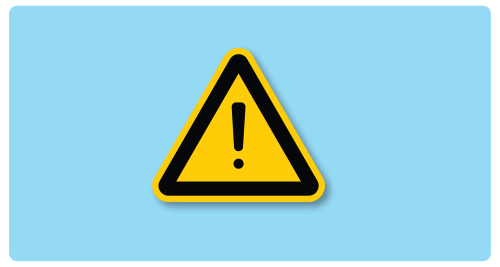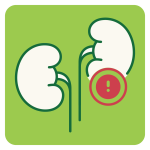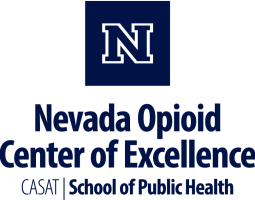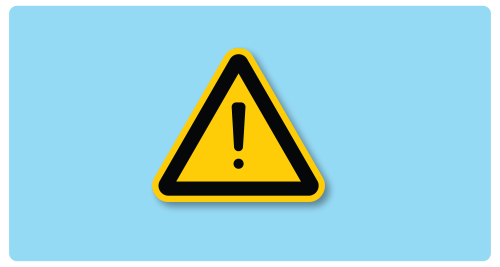Synthetic cannabinoids like SPICE and K2 continue to appear in emergency departments and behavioral health conversations across Nevada. This special collaborative post from CASAT OnDemand and the Nevada Opioid Center of Excellence (NOCE) provides an overview of what these substances are, how they differ from opioids and cannabis, and why they present ongoing risks. Drawing from national sources and recent state-level data, this post offers timely insights for providers, educators, and prevention professionals. It’s also intended to help parents, caregivers, and community members better understand the dangers of these substances and how to respond in an emergency. A free downloadable fact sheet is also available to support outreach, education, and community awareness efforts.
What Are Synthetic Cannabinoids and Why Are They Risky?

SPICE and K2 are street names for synthetic cannabinoids, lab-made chemicals designed to mimic THC, the psychoactive compound in cannabis. These substances are often marketed as legal or safe alternatives to marijuana, but their effects can be unpredictable and dangerous. Even a single use of synthetic cannabinoids can be harmful or fatal.
Despite being labeled as “herbal incense” or “potpourri” and often marked “not for human consumption,” these substances are widely used to achieve a high similar to marijuana. But unlike natural cannabis, synthetic cannabinoids can be significantly more potent, less predictable, and much more dangerous. Because manufacturers often change the chemical formula to get around legal restrictions, the effects of these substances are even more unpredictable (Get Smart About Drugs, n.d.).
These substances differ from both cannabis and opioids in key ways. Unlike cannabis, they are not plant-derived but sprayed chemical compounds often absorbed onto dried plant material or dissolved into vaping liquids. And while they can cause overdose-like symptoms such as unconsciousness or seizures, they are not opioids. This means naloxone (Narcan) does not work to reverse their effects.
Common Street Names

Synthetic cannabinoids are sold under a wide range of brand names, often in colorful packaging designed to appeal to youth and downplay their danger.
Some of the most common names include: Spice, K2, RedX Dawn, Paradise, Demon, Black Magic, Spike, Mr. Nice Guy, Ninja, Zohai, Dream, Genie, Sence, Smoke, Skunk, Serenity, Yucatan, Fire, Skooby Snax, and Crazy Clown.
These products are typically sold in small bags at convenience stores, gas stations, head shops, or online, often labeled “not for human consumption” to avoid legal scrutiny (Drug Enforcement Administration, 2024).
How SPICE and K2 Are Used and Who Is Using Them

According to the National Institute on Drug Abuse, synthetic cannabinoids are among the most commonly used class of new psychoactive substances by youth in the U.S. (NIDA, 2022).
They are often chosen by people looking for an alternative to cannabis or trying to avoid detection on drug screens. Use is especially common among youth, individuals experiencing homelessness, and people in institutional settings like jails or prisons.
Synthetic cannabinoids are usually smoked in joints, pipes, or glass pieces, or inhaled using vape devices. Some users may brew the dried plant material into a tea or ingest it in other ways.
Why These Substances Are Dangerous
One of the most concerning aspects of synthetic cannabinoids is their unpredictability. Because they are manufactured without quality control, the amount and potency of the active chemicals can vary widely, even within the same package. This can lead to highly concentrated “hot spots” and severe, sometimes life-threatening reactions.
Reported side effects include:

Hallucinations and psychosis

Severe agitation or paranoia

Elevated heart rate and blood pressure

Seizures and tremors

Kidney injury or organ failure

Stroke, coma, or death
(Drug Enforcement Administration, 2024)
📥 Free Downloadable Resource: What You Need to Know About SPICE and K2
For a printable overview of SPICE and K2 that you can use in trainings, classrooms, or community events, download our updated fact sheet below. This one-page handout summarizes the key facts from this blog post and is designed to help raise awareness about the dangers of synthetic cannabinoids.
Overdose and Naloxone: What to Know in a Crisis

While synthetic cannabinoids like SPICE and K2 can cause symptoms that resemble opioid overdose, naloxone (Narcan) is not effective in reversing their effects. These substances act on entirely different receptors in the brain than opioids, which means naloxone has no impact on the outcome of an overdose. This presents a challenge for emergency responders and behavioral health providers, especially when synthetic cannabinoids are used in combination with opioids or other substances. In these cases, it may be unclear what is causing the symptoms, and supportive care becomes the primary intervention.
If you suspect someone is experiencing an overdose for any reason, call 911 immediately. Do not wait to see if symptoms improve — early intervention can save lives.
If you believe opioids may be involved, call 911 first, and then give naloxone (Narcan) right away. While naloxone does not reverse the effects of synthetic cannabinoids like SPICE or K2, it is safe to use and won’t cause harm — and it can help save a life if opioids are involved.
Nevadans can find naloxone using the Overdose Reversal Medication Finder, and individuals in other states can often access it without a prescription at major pharmacies or through local health departments and community-based programs.
Nevada’s Good Samaritan Law protects individuals who call for help or administer naloxone during a suspected overdose from certain legal consequences — so don’t hesitate to act. Similar protections exist in many other states as well.
Why It Matters in Nevada

SPICE and K2 continue to pose serious and often underestimated risks in Nevada, particularly among youth. According to the 2023 Nevada High School Youth Risk Behavior Survey (YRBS), 6.4% of Nevada high school students reported having used synthetic marijuana such as “Spice” or “K2” (Prinsloo et al., 2024). The YRBS, developed in partnership with the University of Nevada, Reno School of Public Health, is a key tool in tracking emerging substance use trends across the state.
With Nevada’s high rates of substance use and its close ties to the gaming and tourism industries, providers and prevention professionals face unique challenges in identifying and responding to emerging drug trends like SPICE and K2. Raising awareness about these substances across schools, behavioral health settings, and community-based programs is essential to supporting early intervention and protecting vulnerable populations.
Where to Learn More

To learn more about SPICE, K2, and other synthetic cannabinoids, several trusted national organizations offer educational resources for youth, parents, educators, and providers.
The Drug Enforcement Administration (DEA) provides a detailed fact sheet outlining health effects, usage patterns, overdose risks, street names, and legal status.
The National Institute on Drug Abuse (NIDA) also offers a youth-focused handout, that explains what these substances are and why they can be dangerous.
📚 Upcoming Training Opportunity – September 25, 2025
Understanding Synthetics: K2, Spice, and the Emergence of Novel Cannabinoids
This one-hour workshop will provide an overview of new and emerging synthetic cannabinoids and their impacts. Participants will learn how to identify different types of cannabinoids, indicators of use, and trends within Nevada and across the country. The session will also cover how synthetic cannabinoids may intersect with opioid use, overlapping symptoms, risks of co-ingestion, and the role (and limitations) of naloxone.
Learn
Whether you’re a parent, educator, provider, or simply part of your local community, understanding these risks can make a real difference.
Synthetic cannabinoids like SPICE and K2 are not just emerging threats — they are active and ongoing risks in Nevada communities. Continued awareness, education, and collaboration are essential to protecting youth and supporting those on the front lines of prevention and care. CASAT OnDemand and the Nevada Opioid Center of Excellence remain committed to providing timely, evidence-based information that empowers educators, providers, and families to take informed action and reduce harm.
References
Drug Enforcement Administration. (2024). Drugs of Abuse: A DEA Resource Guide, 2024 Edition – K2/Spice Drug Fact Sheet. Retrieved from https://www.dea.gov/factsheets/spice-k2-synthetic-marijuana
Prinsloo, F., Howard, L., Powers, M. G., Zhang, F., Peek, J., Clements-Nolle, K., & Yang, W. (2024). 2023 Nevada High School Youth Risk Behavior Survey (YRBS) Report. University of Nevada, Reno School of Public Health and the Nevada Division of Public and Behavioral Health. https://scholarwolf.unr.edu/server/api/core/bitstreams/1e26acbb-6297-42fe-8ba3-18b64d04c22b/content
National Institute on Drug Abuse. (2022). Mind Matters: K2/Spice (Synthetic Cannabinoids). https://nida.nih.gov/sites/default/files/NIDA_MindMatters_508_K2Spice_2022.pdf
U.S. Drug Enforcement Administration. (n.d.). Spice/K2 (Synthetic Marijuana). Get Smart About Drugs. https://www.getsmartaboutdrugs.gov/drugs/spicek2-synthetic-marijuana
Partnership to End Addiction. (n.d.). What is K2?. https://drugfree.org/drugs/what-is-k2/





